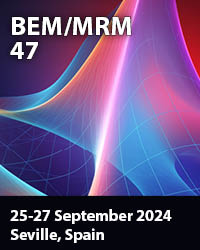RELIABLE GEAR DESIGN: TRANSLATION OF THE RESULTS OF SINGLE TOOTH BENDING FATIGUE TESTS THROUGH THE COMBINATION OF NUMERICAL SIMULATIONS AND FATIGUE CRITERIA
Price
Free (open access)
Transaction
Volume
130
Pages
12
Page Range
111 - 122
Published
2021
Paper DOI
10.2495/CMEM210101
Copyright
Author(s)
FRANCO CONCLI, LORENZO MACCIONI, LUCA BONAITI
Abstract
Establishing the actual gear root bending strength is a fundamental aspect in gear design. With this respect, gears materials can be characterized through two types of tests, i.e. on Running Gears (RG) or Single Tooth Bending Fatigue (STBF). The former is able to reproduce the loading conditions of the actual gears and, therefore, leads to the most accurate results. The latter excels in terms of efficiency and simplicity of the experimental campaign but as a drawback, tends usually to overestimate the material strength due to the different stress state histories it induces on the tooth root. Therefore, a common practice is to carry out STBF tests and apply a correction coefficient (fkorr) for exploiting the results in the design of actual gears. In the present paper, an approach to estimate fkorr centered on the combination of numerical simulations and multi-axial fatigue criteria based on the critical plane capable of taking into account non-proportional loading conditions has been proposed. In particular, the same gear geometry has been simulated through Finite Element (FE) models in two conditions, i.e. STBF and RG. The outcomes of the simulations, in terms of stress histories in the tooth root region, have been analyzed with five different fatigue criteria, i.e. Findley, Matake, McDiarmid, Papadopoulos, and Susmel et al. fkorr has been calculated as the ratio between the maximum damage parameter observed in the STBF and RG conditions according to the different fatigue criteria. Results show that fkorr, calculated for three different materials (i.e. 18NiCrMo5, 42CrMoS4, 31CrMo12), differs up to 22% between the RG and the STBF conditions (depending on the criterion considered). Therefore, future studies should aim to understand which fatigue criterion is the most appropriate for this type of analysis.
Keywords
material characterization, STBF, FEM, gears, multiaxial fatigue, critical plane





